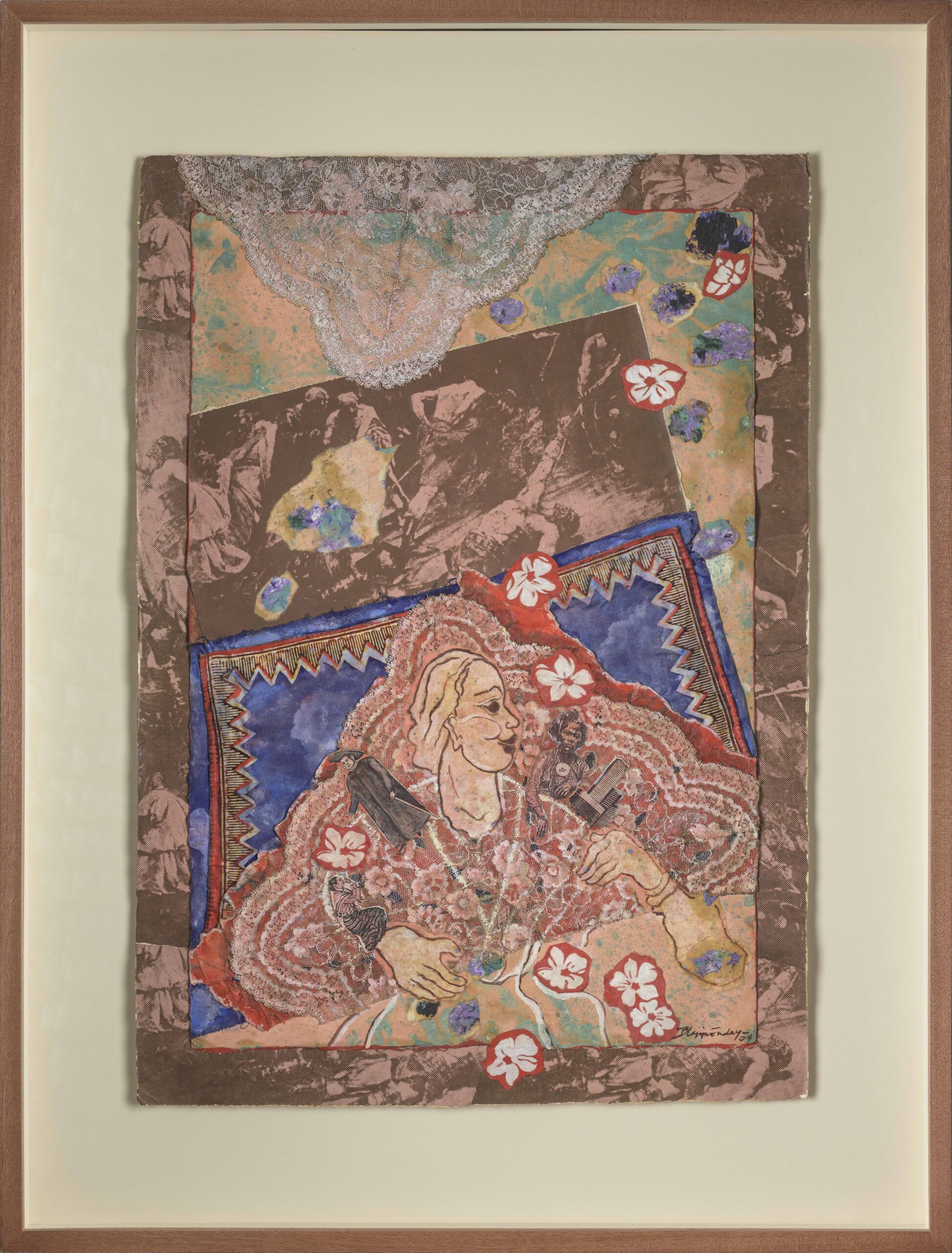A retelling of stories of Filipinas and histories of the motherland

THROUGHOUT her career, artist Imelda Cajipe Endaya focused on works about women and the history and socio-political climate of a nation. These themes can be seen in a new retrospective, “Imelda Cajipe Endaya: Pagtutol at Pag-asa” (Refusal and Hope), which showcases six decades of her work.
Ms. Cajipe Endaya (b. Manila, 1949) is an artist whose work is distinguished by artistic research and conversation across forms and materials. She has also gained recognition in the Asia-Pacific region for a singular Filipina visual language that is focused on the possibilities of feminist art. She is the founding president of Kababaihan sa Sining at Bagong Sibol na Kamalayan (Kasibulan), a feminist arts organization that has been active since 1987, and is also the founder of Pananaw, the first publication of its kind on Philippine art. Ms. Endaya is also a widely published writer, curator, and cultural worker.
Initially programmed for 2020 but halted with the arrival of COVID-19 that year, the exhibit at the Cultural Center of the Philippines’ (CCP) Main Gallery was two years in the making. It brings together over 200 artworks and archival materials of the artist’s extensive practice in printmaking, painting, collage, and installation art. With themes on women, history, and commitment to the truth, the exhibition adopts an attitude of active remembering.
To describe her art, Ms. Endaya uses the phrase “an art of refusal” — which she adopted from a text by American expatriate activist and professor Dolores Feria’s essay, “On the Literature of Refusal.”
“This sense of non-compliance is modulated today into one that remains resolute as women, and those with whom they link hands sustain an unwillingness to simply concede. It is refusal to relinquish individual including bodily and shared autonomies,” the exhibition’s description states.
The exhibit is curated by Lara Acuin and Con Cabrera.
FOCUSING ON THE FILIPINA
The exhibition begins at CCP’s third floor hallways where Ms. Endaya’s early works from the 1960s and 1970s are displayed. On the hallway facing the gallery are vermillion-accented paintings which, through windows painted in each canvas, represent woman as domesticated and only a witness to events. The prints shown beside the Main Gallery’s entrance are abstracts and images of women at different periods in history.
Ms. Endaya’s paintings also show her unique process of collaging — assembling sawali weave textures, embroidery, and painting.
“[Ms. Endaya] decenters herself from the limelight and in her art making. It’s not a particular voice or stand, but more of trying to depict the condition without drawing attention to her own message,” exhibit co-curator Lara Acuin said of the artist’s work during a walk-through of the exhibit on Aug. 31.
Upon entrance to the main gallery, the first works seen are the artist’s self-portraits done during the coronavirus pandemic.
The biggest work is a recreation of an installation from an exhibit in 1998 at the Metropolitan Museum. The installation, titled Kapatiran ng mga Lakambining may Bahay, shows an altar with the names of women in history who are often overlooked.
“I created an installation of prison windows, knotted and joined with long sheets of textile and made them like blankets people would normally tie together to escape and rescue others when in incarceration, or when a house is on fire. Yet I have arranged them like an altar as a tribute to how the Lakambini turns struggles into triumphs,” Ms. Endaya described of the installation.
The exhibit also showcased Ms. Endaya’s artworks dedicated to the Filipina migrant laborer.
The Wife is a D.H. (Domestic Helper) from 1995 shows parts of the original assemblage, with items such as a figure of the Virgin Mary, an electric iron, and a mop in an open suitcase.
TEXT, WAR, AND FEAR
Aside from art, scattered on the exhibit’s walls are text from the artists lectures and essays.
“A socially committed artist must be encouraged to portray the human condition with an open mind and a free spirit. And the only proper doctrines are truth and artistic integrity,” says one of the texts.
Ms. Endaya also tackles themes of war and imperialism, as seen in a portrait of a man during the Bataan Death March, old posters she made for a campaign in 1984, paintings of important public figures during the first and second EDSA Revolutions, and prints and collages based on the conflict in Kosovo which happened while she was finishing her artist residency in Switzerland in 1999.
During the exhibit launch on Sept. 3, which was livestreamed on social media, the 72-year-old artist recalled words from the founder and vice-president of the women’s chapter of the Katipunan, Gregoria de Jesus: “Matakot sa kasaysayan. Walang lihim na di mabubunyag. (Fear history for no secret goes uncovered).”
“…Iyun ang gusto kong maging tema nitong eksibisyon (That is the theme I want for this exhibition),” Ms. Endaya said.
LAST EXHIBIT
The retrospective is the final major exhibit to be held at the CCP Main Gallery before the temporary closure of the cultural center’s main building. The building will undergo major renovations starting next January until December 2024.
“We are not going to stop our programs and projects. We will be moving physically somewhere else within the complex and maybe elsewhere beyond the complex,” said Ariel Yonzon, CCP Associate Artistic Director of the Production and Exhibition Department, at the exhibition preview on Aug. 31.
The CCP will be hosting monthly public programs until November, which will be held onsite and streamed online. An off-site exhibition, “Imelda Cajipe Endaya: Windows To An Archive,” will also be presented at the Ateneo Library of Women’s Writings from Sept. 9 to Dec. 2, in partnership with the Ateneo Art Gallery.
For more information, visit https://pagtutolatpagasa.carrd.co/. For events related to the exhibition, visit https://www.facebook.com/ccpvamd/. — Michelle Anne P. Soliman



